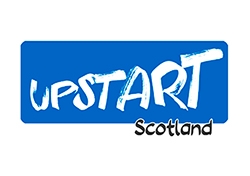Upstart launches our ‘Play Not Tests at P1’ campaign on 23rd April. But please don’t think that means we’re opposed to assessment. As all early years practitioners know, assessment is an essential part of the job. What we’re objecting to is the use of national standardised tests of literacy and numeracy skills at far too early a stage in children’s education – and we’ll publish our many reasons on launch day.
The most appropriate type of assessment for children during the kindergarten stage is informed professional observation. At Upstart’s first ever training day on 9th April, Anna Ephgrave discussed the use of the Leuven Scale for assessing children’s levels of involvement in learning. She has kindly sent us this summary, illustrated with pictures from her presentation.
OBSERVATIONAL ASSESSMENT USING THE LEUVEN SCALE
by Anna Ephgrave
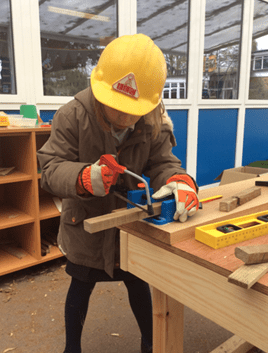 Professor Ferre Laevers has developed descriptors for various Levels of involvement as a way to measure the extent to which a child is ‘engaged’, ‘focused’, ‘learning’.
Professor Ferre Laevers has developed descriptors for various Levels of involvement as a way to measure the extent to which a child is ‘engaged’, ‘focused’, ‘learning’.
There are descriptors for five different levels of involvement and these can be used as a simple, objective way of measuring the engagement of an individual, group or class. Level 5 (with concentration, creativity, energy and persistence) indicates that the deepest learning is taking place at that moment, whereas Level 1 indicates minimal learning.
There are many ways in which these levels of involvement can be used:-
Individual children
We start with the assumption that all children want to be engaged, i.e. they want to be at level 5. In a superb setting, if a child is not becoming engaged, then the descriptors can be used to monitor a child throughout a day or a week at regular intervals in order to uncover patterns or preferences. Always bear in mind with such a child that there might be external factors causing emotional well-being to be affected and remember that a child with poor emotional well-being is not able to become deeply engaged. However, such monitoring can be a powerful way to see which sessions or events do engage a child and which clearly do not. Starting with the assumption that they do want to be engaged, it is then possible to see which types of session are ‘working’ for the particular child.
Groups or class
The same descriptors can be used to consider group or whole class sessions. Again, assuming that we are aiming to deliver practice that will see most children at level 4 or 5, we can quickly start to see which sessions or events are appropriate and productive, in terms of engagement/involvement (and therefore progress). For example, if we are delivering an input on the carpet, then we should have the level descriptors in mind.
 When the children start to fidget and become distracted, this tells us that the session has become unproductive. It does not tell us that the children are ‘naughty’ or that ‘they can’t concentrate’ or that ‘they have ADHD’. It tells us that what we are offering is not engaging and therefore is not supporting synapse formation and learning. Once we accept this, it is clear that group sessions for babies are rarely appropriate. Equally, carpet sessions that are longer than a few minutes are not appropriate for 3-year-olds. Assembly for Reception children is not going to deliver engagement and nor are lengthy phonic sessions for any age child.
When the children start to fidget and become distracted, this tells us that the session has become unproductive. It does not tell us that the children are ‘naughty’ or that ‘they can’t concentrate’ or that ‘they have ADHD’. It tells us that what we are offering is not engaging and therefore is not supporting synapse formation and learning. Once we accept this, it is clear that group sessions for babies are rarely appropriate. Equally, carpet sessions that are longer than a few minutes are not appropriate for 3-year-olds. Assembly for Reception children is not going to deliver engagement and nor are lengthy phonic sessions for any age child.
I’d also urge practitioners to use these levels to measure the effectiveness of focused tasks, snack time, circle time etc. In all these cases, the level of involvement is often very low, the adults and children can become quite stressed and the learning is minimal. It is, then, a very useful tool for practitioners to use as a way of assessing and then arguing for change.
Environment
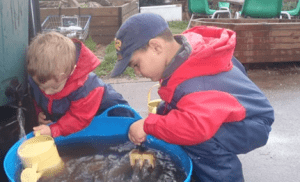 The levels can also be used to see which areas of an environment are ‘working’. Which areas are delivering good levels of involvement and which are not? This is an on-going process, particularly with some age groups as their interests and stage of development can change dramatically over the course of a few months. However, some areas are always engaging and others are rarely so. Also, it will help practitioners see which areas are rarely, if ever, used. Such areas obviously need to be changed as they are essentially a ‘wasted space’.
The levels can also be used to see which areas of an environment are ‘working’. Which areas are delivering good levels of involvement and which are not? This is an on-going process, particularly with some age groups as their interests and stage of development can change dramatically over the course of a few months. However, some areas are always engaging and others are rarely so. Also, it will help practitioners see which areas are rarely, if ever, used. Such areas obviously need to be changed as they are essentially a ‘wasted space’.
Resources
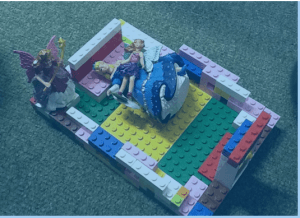 I would recommend using the levels as a way of assessing the effectiveness of resources. Whether there is a huge budget or not, it is best to have mainly resources which are open-ended and can therefore be used in many different ways. For example, for small world play, rather than having a pirate ship, a dolls house, a castle, a rocket, a caravan, a farm and a car park for the children to use, there is far more potential for engagement with wooden blocks, lego, pieces of fabric, paper and pens etc. In this way, the children can create their own rocket, car park, castle etc.
I would recommend using the levels as a way of assessing the effectiveness of resources. Whether there is a huge budget or not, it is best to have mainly resources which are open-ended and can therefore be used in many different ways. For example, for small world play, rather than having a pirate ship, a dolls house, a castle, a rocket, a caravan, a farm and a car park for the children to use, there is far more potential for engagement with wooden blocks, lego, pieces of fabric, paper and pens etc. In this way, the children can create their own rocket, car park, castle etc.
So how do we achieve the best levels of involvement?
Everything in my life experiences – personal, voluntary, professional and academic – has led me to conclude that, once they feel secure, children become most deeply engaged when they have autonomy – when they are able to choose what to do.
What is more, nothing in my life has ever demonstrated that this is not true. This applies to a new born baby, a toddler, a vulnerable foster child, a child on the autistic spectrum, a child without any English, a year one child, a child with a ‘gifted’ label or a child with additional needs.
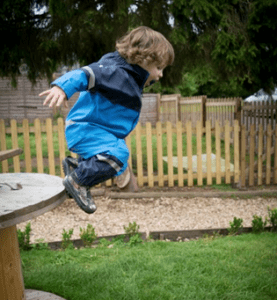 The best levels of involvement, (leading to the best progress), are achieved when children’s well-being is high and we then let them choose what to do. This has become known as ‘free-flow play’, ‘child-initiated play’, ‘choosing time’, ‘explore and learn time’, ‘continuous provision’, etc. But, let’s be clear – within agreed boundaries – I am talking about children playing where they want, with whatever they choose, for as long as they want, in whatever way they want.
The best levels of involvement, (leading to the best progress), are achieved when children’s well-being is high and we then let them choose what to do. This has become known as ‘free-flow play’, ‘child-initiated play’, ‘choosing time’, ‘explore and learn time’, ‘continuous provision’, etc. But, let’s be clear – within agreed boundaries – I am talking about children playing where they want, with whatever they choose, for as long as they want, in whatever way they want.
This sounds simple, but if every child in a setting is to be able to play as they choose then there are several things that need to be in place to support this:-
- A prioritisation of well-being above all else, recognising that high well-being is critical in order for a child to feel secure, which in turn will allow them to become involved.
- Consistent boundaries, expectations and routines (within which each child can then relax and have the freedom that they need in order to learn effectively).
- An enabling environment (which is organised to meet the ever-changing needs and interests of each unique child).
- Skilful, empathic adults interacting appropriately to form warm relationships and to support each child in a way that respects them, preserves their autonomy and offers genuine interest and fascination.
- Manageable systems of assessment and record keeping (to satisfy any statutory requirements, without impeding the progress of the children, and while maintaining the sanity of the staff).
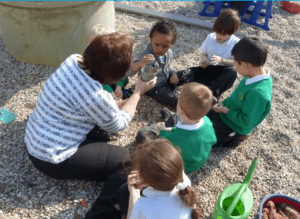 Each of these aspects of our work is critical if the play is to be successful and productive. What is not necessary are any written forward plans. If the children have genuine choice, if it is genuinely child-initiated play, then we do not know what the children will choose to do and we cannot, therefore, pre-plan the activities or the learning outcomes. Trust that deep level involvement indicates learning, learning which might not be easy to measure, but will have life-long impact on the child.
Each of these aspects of our work is critical if the play is to be successful and productive. What is not necessary are any written forward plans. If the children have genuine choice, if it is genuinely child-initiated play, then we do not know what the children will choose to do and we cannot, therefore, pre-plan the activities or the learning outcomes. Trust that deep level involvement indicates learning, learning which might not be easy to measure, but will have life-long impact on the child.
| The Leuven Scale for Involvement1) Low Activity Activity at this level can be simple, stereotypic, repetitive and passive. The child is absent and displays no energy. There is an absence of cognitive demand. The child characteristically may stare into space. N.B. This may be a sign of inner concentration.2) A Frequently Interrupted Activity The child is engaged in an activity but half of the observed period includes moments of non-activity, in which the child is not concentrating and is staring into space. There may be frequent interruptions in the child’s concentration, but his/her Involvement is not enough to return to the activity.3) Mainly Continuous Activity The child is busy at an activity but it is at a routine level and the real signals for Involvement are missing. There is some progress but energy is lacking and concentration is at a routine level. The child can be easily distracted.4) Continuous Activity with Intense Moments The child’s activity has intense moments during which activities at Level 3 can come to have special meaning. Level 4 is reserved for the kind of activity seen in those intense moments, and can be deduced from the ‘Involvement signals’. This level of activity is resumed after interruptions. Stimuli, from the surrounding environment, however attractive cannot seduce the child away from the activity.5) Sustained Intense Activity The child shows continuous and intense activity revealing the greatest Involvement. In the observed period not all the signals for Involvement need be there, but the essential ones must be present: concentration, creativity, energy and persistence. This intensity must be present for almost all the observation period. |
Anna Ephgrave is a highly experienced teacher of children between 3 and 6. Her practical, developmentally-appropriate approach to pedagogy has inspired several best-selling books, including ‘The Nursery Year in Action’, ‘The Reception Year in Action’ and ‘Year 1 in Action’.

